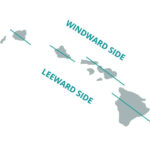Understanding your waist size is more than just knowing your clothing dimensions; it’s a crucial indicator of your health, particularly in assessing the amount of fat around your abdomen. This abdominal fat comes in two forms: subcutaneous fat, which lies just beneath the skin and is easily felt, and visceral fat, which accumulates around your internal organs. It’s this visceral fat that poses significant health risks.
Visceral fat is strongly linked to serious health conditions such as high cholesterol, high blood pressure, and type 2 diabetes. A larger waist circumference can suggest an excess of this harmful fat within your organs, increasing your susceptibility to health problems. For instance, excess fat in the liver can disrupt its function, leading to the release of too much fat and sugar into your bloodstream, thereby elevating your risk of coronary heart disease and type 2 diabetes. Therefore, accurately measuring your waist is a simple yet powerful step towards understanding and managing your health.
Precisely Where to Measure Your Waist for the Best Results
To get the most accurate reading of your waist circumference, it’s important to measure at the right spot. Forget about simply measuring at your beltline, which can vary. The National Institute for Health and Care Excellence (NICE) recommends a specific method to ensure consistency and accuracy, focusing on the ‘waist to height ratio’ as a key health indicator. Here’s how to measure your waist correctly:
-
Locate the Right Points: Stand straight and use your fingers to find the bottom of your ribs and the top of your hips. These are your anatomical landmarks for accurate waist measurement.
-
Position the Tape Measure: Wrap a flexible tape measure around your bare abdomen at the midpoint between these two points. This is usually just above your belly button, but finding the halfway point ensures accuracy regardless of belly button position.
-
Maintain Proper Tape Tension: Ensure the tape measure is snug around your waist, making good contact all the way around, but not so tight that it digs into your skin. The goal is to measure the circumference without compressing the soft tissue.
-
Breathe Naturally and Record: Breathe out gently and naturally. Take the measurement at the point where the tape measure meets at the zero mark. Record this measurement in either inches or centimeters, ensuring you use the same unit for your height measurement later.
Calculating Your Waist to Height Ratio
Once you have your waist measurement, the next step is to calculate your waist to height ratio. This ratio provides a more personalized assessment of your abdominal fat distribution compared to just waist circumference alone.
-
Measure Your Height: Measure your height in the same units you used for your waist measurement (inches or centimeters). For example, if you measured your waist in centimeters, measure your height in centimeters as well.
-
Perform the Calculation: Divide your waist measurement by your height measurement.
Waist to Height Ratio = Waist Measurement / Height Measurement
For example, if your waist is 96.5cm and your height is 170cm, the calculation would be: 96.5cm / 170cm = 0.57. Therefore, your waist to height ratio is 0.57.
The String Challenge: A Tape Measure Alternative
If you don’t have a tape measure handy, a piece of string can serve as a useful alternative for a quick assessment, known as the ‘string challenge’:
-
Measure Your Height with String: Use a piece of string to measure your height from the bottom of your feet to the top of your head.
-
Prepare the String: Cut or mark the string at the point that matches your height. Then, fold this string in half.
-
Wrap Around Your Waist: Wrap the folded string around your waist at the same midpoint location described earlier (between the bottom of your ribs and the top of your hips).
-
Assess the Fit: Observe if the folded string can fully encircle your waist. If you find that the folded string is too short to go all the way around your waist, it indicates that you may be carrying excess abdominal fat.
While the string challenge is less precise than using a tape measure and calculating the waist to height ratio, it provides a quick and easy way to understand if your waist circumference might be a cause for concern.
Understanding What Your Waist to Height Ratio Means for Your Health
The waist to height ratio is a valuable tool because it reflects the proportion of abdominal fat relative to your overall body size. A higher ratio indicates a greater amount of abdominal fat, which correlates with increased health risks.
-
Ratio of 0.6 or Higher: This range indicates the highest risk level. Individuals in this category are strongly advised to consider weight loss to significantly reduce their risk of heart and circulatory diseases.
-
Ratio Between 0.5 and 0.59: This range represents an increased risk. Weight loss is typically recommended to mitigate the potential for developing heart and circulatory diseases.
-
Ratio Between 0.4 and 0.49: This range is considered a healthy range. Maintaining this ratio is beneficial for long-term health.
If you have concerns about your waist size or your waist to height ratio, it’s always best to consult with a healthcare professional. Your GP or a nurse can provide personalized advice, further assess your health risks, and guide you on appropriate steps to take for your well-being. Regularly monitoring your waist measurement and understanding your waist to height ratio can empower you to make informed decisions about your health and lifestyle.

